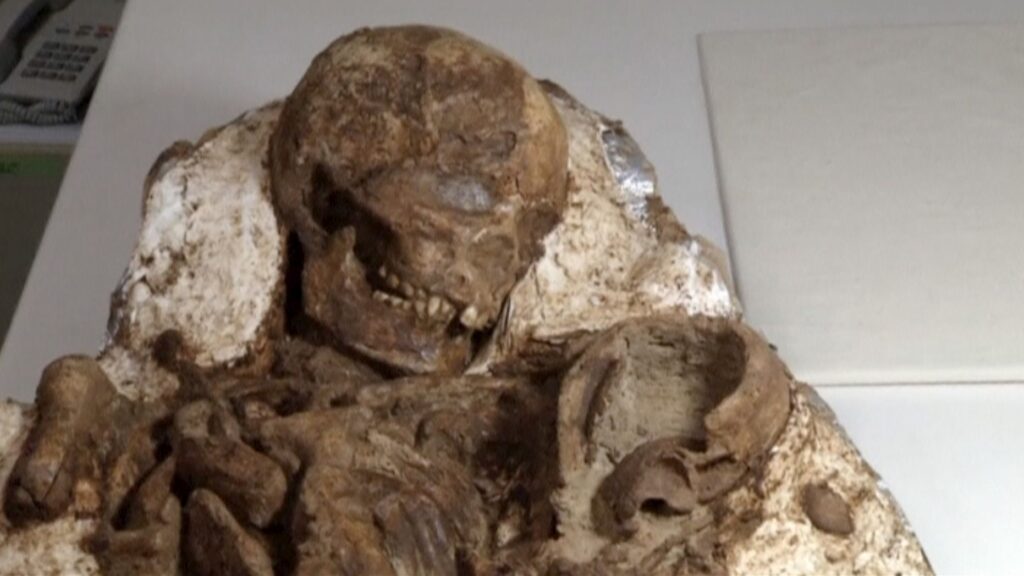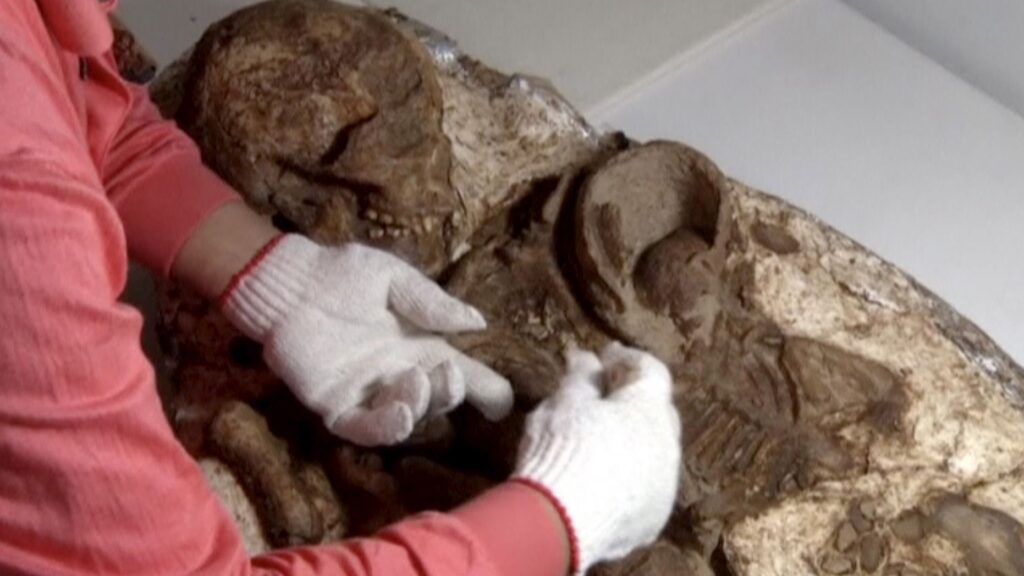Archaeologists discover 4,800-year-old fossil of a mother cradling a baby
The ancient remains of a young mother and a child locked in a 4,800-year-old embrace were discovered by archeologists.
Of 48 sets of remains discovered from tombs in Taiwan, including five children’s fossils, this makes a remarkable discovery.
The scientists were shocked to find the maternal moment, which they claim are the first evidence of human activity in central Taiwan.

Preserved for nearly 5,000 years, the skeleton found in the Taichung area shows a young mother gazing down at the baby cradled in her arms.
Researchers turned to carbon dating to determine the ages of the fossils, which they traced back to the Neolithic Age, a period within the Stone Age.
Excavation began and took a year for archaeologists to complete. But of all the remains found in the ancient graves, one pair set stood out from the rest.
‘When it was unearthed, all of the archaeologists and staff members were shocked.
‘Why? Because the mother was looking down at the baby in her hands,’ said Chu Whei-lee, a curator in the Anthropology Department at Taiwan’s National Museum of Natural Science.
According to the researchers’ measurements, the mother was just 160 cm tall, or 5 foot 2 inches. The infant in her arms is 50 cm tall – just over a foot-and-a-half.
This breathtaking discovery came as a surprise to the researchers on sight, but it isn’t the first of its kind. In the past, archaeologists have dug up remains of similar moments that have been preserved for thousands of years.
Notably, Chinese archaeologists unearthed the interlocked skeletons of a mother and child last year from an Early Bronze Age archaeological site branded the ‘Pompeii of the East’, the People’s Daily Online reported.
The mother is thought to have been trying to protect her child during a powerful earthquake that hit Qinghai province, central China, in about 2,000 BC.
Experts speculated that the site was hit by an earthquake and flooding of the Yellow River.
Photographs of the skeletal remains show the mother looking up above as she kneels on the floor, with her arms around her young child. Archaeologists say they believe her child was a boy.






